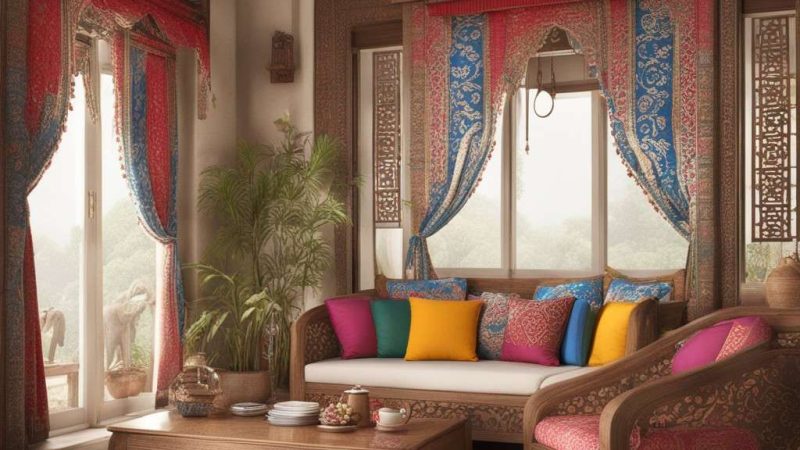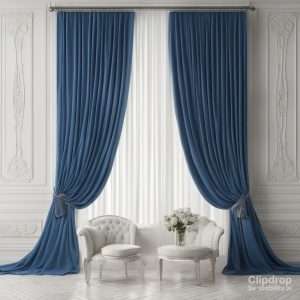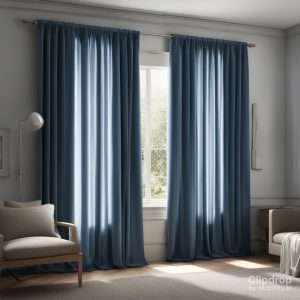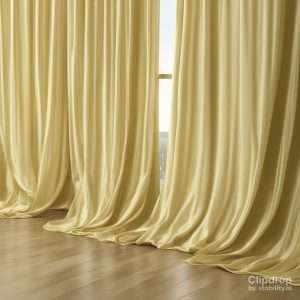Noren curtains, also known as Japanese curtains, have long been cherished for their exquisite craftsmanship and cultural significance. These distinctive pieces of textile art, often seen hanging in doorways and entrances across Japan, hold a rich history and continue to captivate modern enthusiasts worldwide.
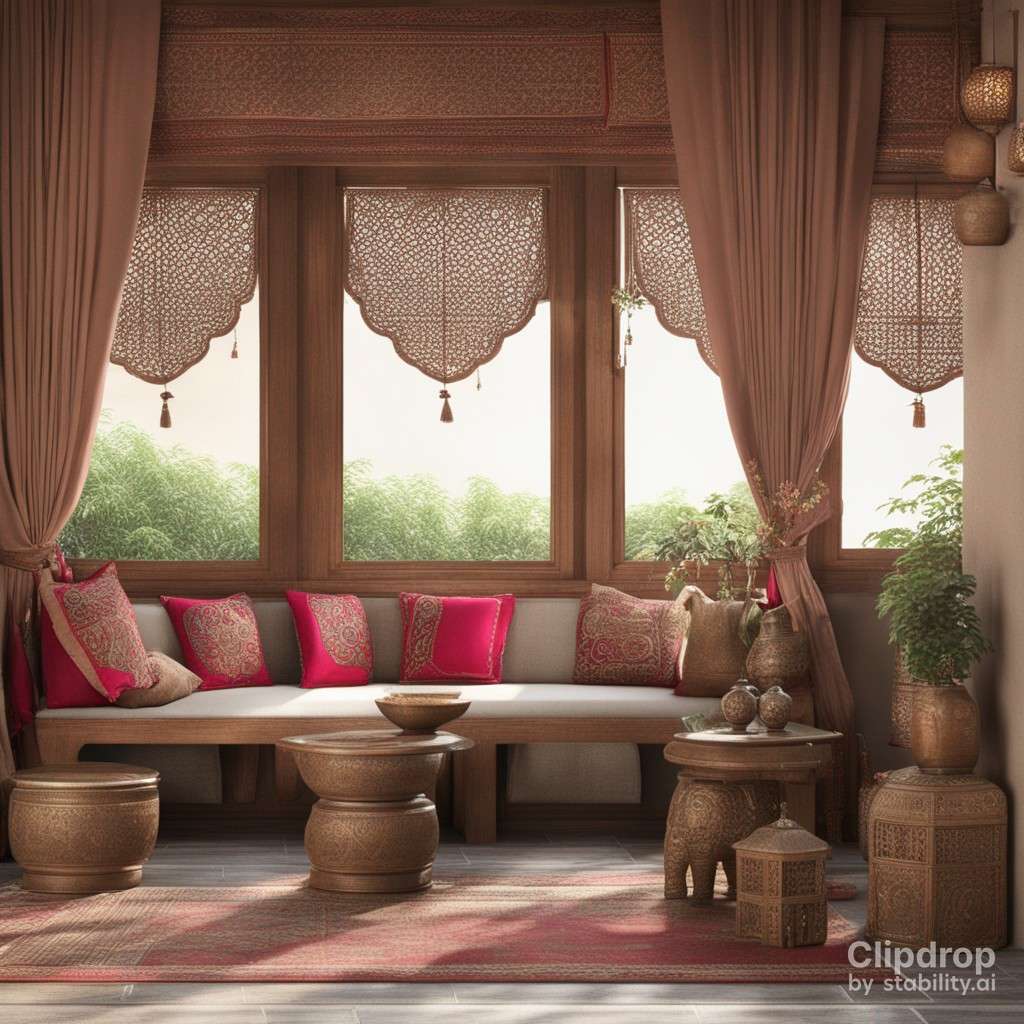
A. What Are Noren Curtains?
Noren curtains are traditional Japanese door hangings that serve both functional and decorative purposes. Typically rectangular in shape, they are crafted from various fabrics, with linen noren being a popular choice for its durability and natural aesthetic. Noren curtains feature captivating designs, often displaying intricate patterns, symbols, or motifs that represent different aspects of Japanese culture.
B. Historical Significance
The history of noren curtains can be traced back to ancient Japan, where they were originally used in shops and restaurants to signify their opening and to keep dust and insects at bay. Over time, they became an integral part of Japanese culture, appearing in homes, businesses, and even at festive occasions. Short noren curtains were particularly common during the Edo period, displaying motifs that celebrated the changing seasons and local traditions.
C. Modern Relevance
In contemporary Japan, custom noren curtains have gained popularity, allowing individuals to personalize their living spaces or businesses with unique designs. Beyond Japan, the allure of noren door curtains has transcended borders, finding their way into homes and establishments worldwide. These curtains are not merely decorative; they also serve as functional room dividers, privacy screens, and artistic statements.
As we delve deeper into the world of noren curtains, we’ll explore their various designs, materials, and uses, shedding light on their continued relevance in today’s diverse and ever-evolving world.
Noren Curtain Design
Noren curtains, Japanese door curtains, have a rich history and diverse design elements that have captivated people worldwide. When exploring noren curtain design, you’ll encounter a fascinating blend of traditional patterns and contemporary styles.
A. Traditional Patterns
1. Edo Period Motifs
In the realm of noren curtains, the Edo period motifs stand out as timeless classics. These motifs draw inspiration from Japan’s Edo era (1603-1868) and reflect the aesthetics and values of that time.
The noren fabric during this period often featured intricate designs such as cherry blossoms, koi fish, and cranes. These motifs were not only visually appealing but also carried deep cultural significance.
2. Seasonal Symbolism
Another captivating aspect of traditional noren curtains is their connection to the changing seasons. Japanese culture places great importance on the seasons, and this is beautifully reflected in noren designs.
Noren door curtains featuring seasonal symbolism showcase cherry blossoms in spring, waves in summer, maple leaves in autumn, and snowflakes in winter. These designs not only celebrate the beauty of nature but also serve as a reminder of the impermanence of life, a concept deeply rooted in Japanese philosophy.
B. Contemporary Styles
1. Minimalist Designs
While traditional motifs hold a special place in noren curtain design, contemporary styles have also made a significant impact. Minimalist designs, in particular, have gained popularity in modern interior decor.
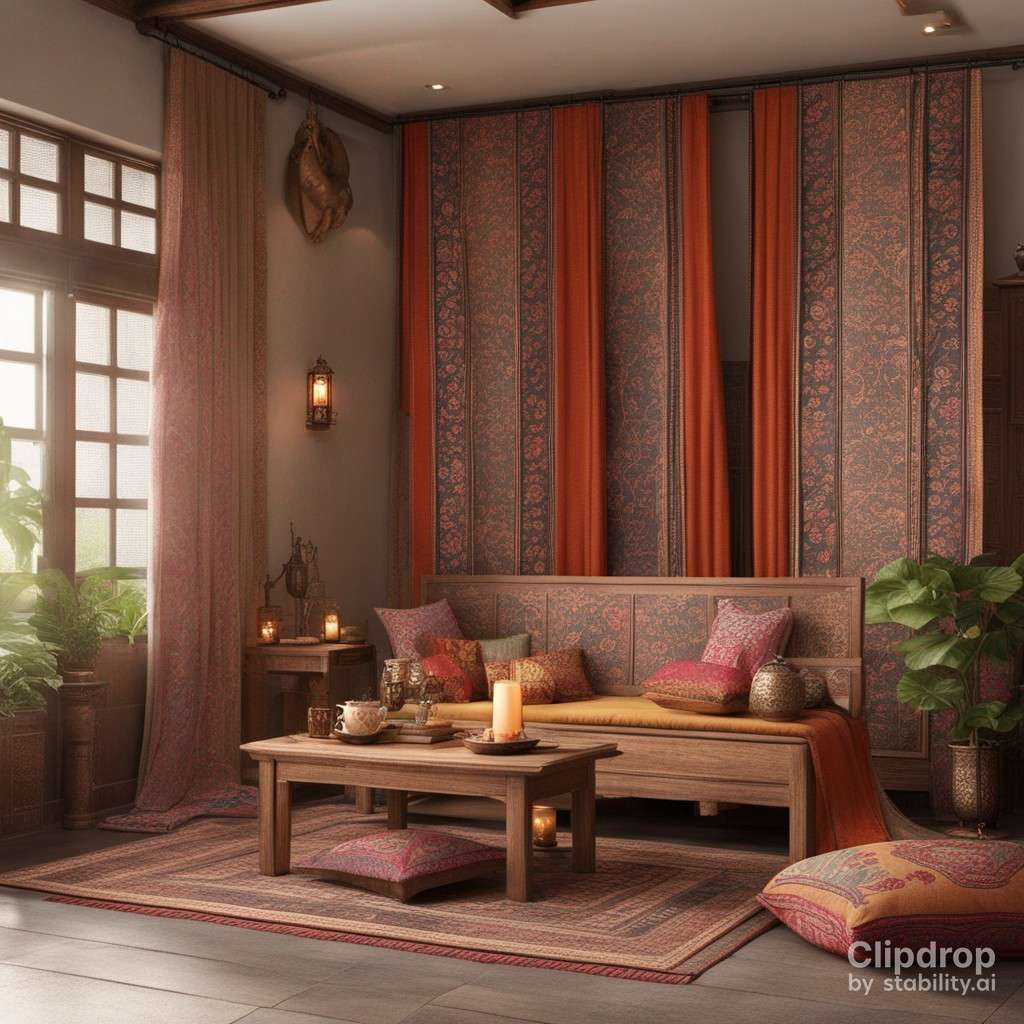
Custom noren with minimalist designs often feature clean lines, solid colors, and subtle geometric patterns. These curtains add a touch of elegance to contemporary living spaces and provide a sense of harmony and simplicity.
2. Customization Options
One of the remarkable aspects of noren curtains today is the wide range of customization options available. You can now personalize your noren to match your unique style and preferences.
Customization options include choosing the noren fabric material, selecting specific motifs or patterns, and even incorporating personal messages or artwork. This level of customization allows noren curtains to become not just functional pieces but also expressions of individual creativity.
In summary, noren curtain design encompasses a rich tapestry of traditional patterns rooted in Japanese history and culture, as well as contemporary styles that offer endless possibilities for personalization. Whether you’re drawn to the elegance of Edo period motifs or the simplicity of minimalist designs, noren curtains continue to be a captivating and versatile element of interior decor.
Materials and Craftsmanship of Noren Curtains
When it comes to Noren curtains, the choice of materials and the craftsmanship involved are crucial factors that determine their quality and appeal. The selection of fabrics and dyeing techniques contributes significantly to the aesthetics and functionality of these Noren curtains.
A. Fabric Choices
1. Cotton
Cotton is one of the most popular fabrics used for crafting Noren curtains. Its natural, breathable properties make it a favored choice. Cotton Noren curtains are known for their durability and versatility.
2. Linen
Linen is another fabric commonly used for crafting Noren curtains. It offers a unique texture and appearance, often characterized by its slightly rough and natural look. Linen Noren curtains are appreciated for their rustic charm and ability to filter light gracefully.
3. Silk
For those seeking a touch of elegance and luxury, silk Noren curtains are an excellent choice. Silk’s smooth texture and lustrous sheen make it a standout option. These curtains exude a sense of refinement and are often used in upscale settings.
B. Dyeing Techniques
When it comes to adding vibrant and intricate patterns to Noren curtains, dyeing techniques play a crucial role. Here are two prominent methods:
1. Shibori
Shibori is a traditional Japanese dyeing technique known for its intricate and mesmerizing patterns. It involves various methods of binding, folding, or twisting fabric before dyeing, resulting in unique and artistic designs on the Noren curtains. Shibori-dyed Noren curtains often feature captivating motifs inspired by nature or cultural symbols.
2. Yuzen
Yuzen dyeing is another Japanese technique used to create stunning, hand-painted designs on Noren curtains. Highly skilled artisans use special brushes and dyes to produce intricate and colorful artwork. Yuzen-dyed Noren curtains are prized for their exquisite detail and intricate imagery.
In summary, the choice of fabric and dyeing technique greatly influences the character and appeal of Noren curtains. Whether you prefer the natural simplicity of cotton, the rustic elegance of linen, or the luxurious sheen of silk, and whether you opt for Shibori’s intricate patterns or Yuzen’s artistic designs, your Noren curtains can be a reflection of your style and taste.
Placement and Functionality of Noren Curtains
When it comes to noren curtains, their placement and functionality extend beyond mere window coverings. They are an integral part of Japanese culture and interior design, serving various purposes in both homes and businesses.
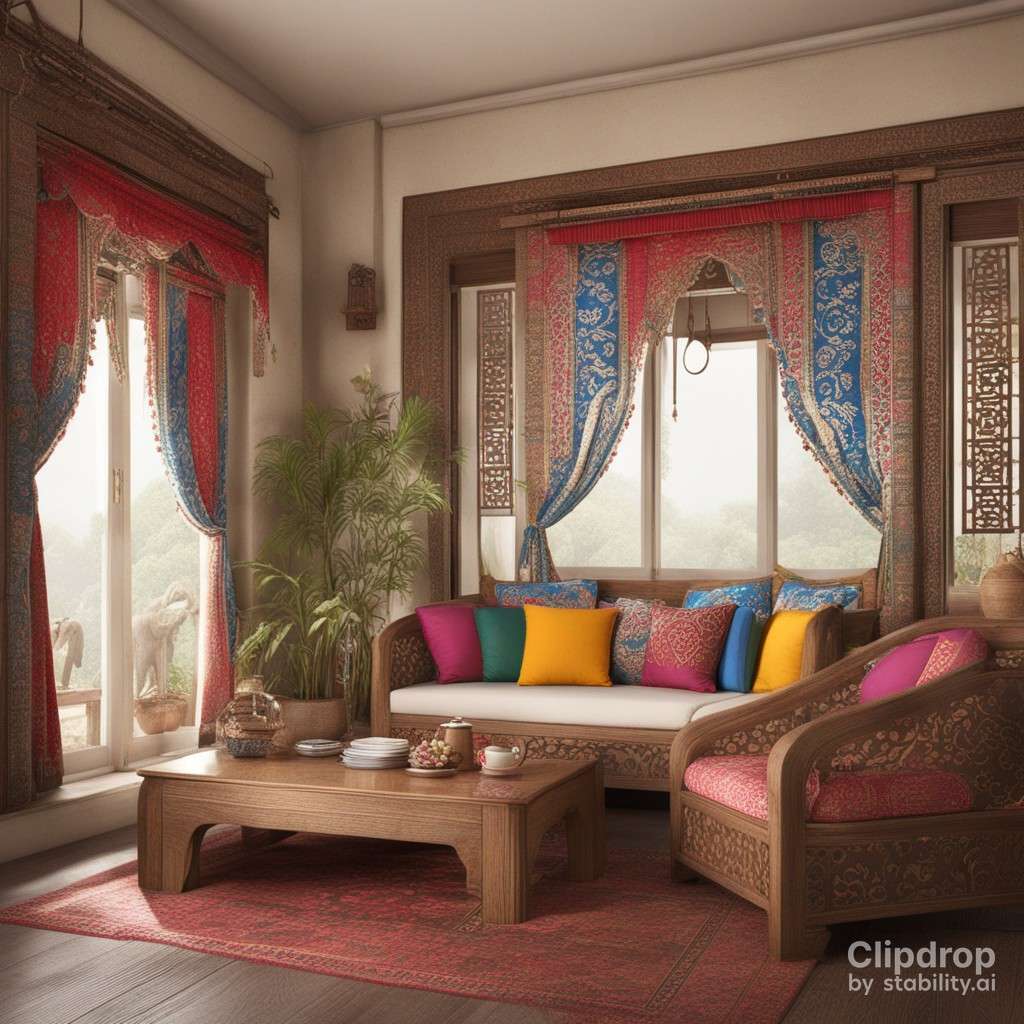
A. Noren in Homes
1. Room Dividers
In Japanese homes, noren curtains often find their place as elegant and practical room dividers. They create distinct sections within a room, adding a touch of privacy while maintaining an open and airy atmosphere. Whether it’s separating the dining area from the living space or defining a study nook, linen noren curtains are a versatile choice for this purpose. The soothing natural fabric complements various interior styles, making it a popular choice among homeowners.
2. Door Curtains
One of the most traditional and iconic uses of noren curtains in homes is as door curtains. These curtains are placed at entrances to homes, kitchens, and even bedrooms. They serve not only as a decorative element but also as functional doorways that keep out insects while allowing a gentle breeze to pass through. Many homeowners opt for custom noren curtains to infuse their personal style into their living spaces. From intricate designs to meaningful symbols, these Japanese door curtains add a unique touch to any home.
B. Noren in Businesses
1. Restaurant Entrances
Noren curtains are a common sight at the entrances of Japanese restaurants. They not only add a traditional and inviting flair to the establishment but also serve practical purposes. Restaurant owners often use them to signal the opening of their business. The act of hanging the noren curtain in the morning and taking it down at night is a ritual that symbolizes the start and end of the business day. These curtains often bear the name or logo of the restaurant, making them an effective form of branding.
2. Shop Signage
In the world of retail, noren curtains are used as distinctive shop signage. They create a striking visual identity, making it easy for passersby to recognize and remember the store. The use of custom noren curtains allows shop owners to convey the essence of their business through unique designs and messages. Whether it’s an antique shop, a modern boutique, or an anime merchandise store, noren curtains can be tailored to reflect the spirit of the business.
In conclusion, noren curtains are not just ordinary window coverings; they are versatile, culturally rich elements that enhance the aesthetics and functionality of both homes and businesses. Whether dividing spaces in a cozy Japanese home or announcing the presence of a bustling restaurant, these curtains continue to play a significant role in Japanese daily life.
Noren Curtain Traditions
Noren curtains hold a special place in Japanese culture, where they are not just a piece of home decor but a symbol of tradition and symbolism. Let’s explore how Noren curtains are woven into the rich tapestry of Japanese traditions.
A. Festive Occasions
Noren curtains play a prominent role in various festive occasions in Japan. They are used to mark the significance of the event and create an atmosphere of celebration. Here are two notable instances where Noren curtains are prominently displayed:
1. New Year Celebrations
The arrival of the New Year is a momentous occasion in Japan, marked by a range of customs and traditions. Among these customs is the hanging of Noren curtains adorned with symbols of good fortune and blessings. These curtains are believed to ward off evil spirits and invite positive energy into homes and businesses.
2. Seasonal Festivals
Japanese festivals are a vibrant tapestry of colors and traditions. Noren curtains are often used to decorate festival venues, creating a sense of excitement and anticipation. Each season brings its own set of festivals, and Noren curtains are customized with motifs that reflect the seasonal changes, such as cherry blossoms in spring and snowflakes in winter. These curtains not only serve as decorations but also as a way to guide festivalgoers to different attractions within the event.
B. Symbolism in Everyday Life
In addition to their role in festive occasions, Noren curtains hold deep symbolism in the daily lives of the Japanese people. They are more than just pieces of cloth; they are imbued with cultural meaning:
1. Spiritual Beliefs
Noren curtains are often used in places of spiritual significance, such as temples and shrines. They act as symbolic doorways between the physical world and the spiritual realm. When passing through a Noren curtain, it is customary to show respect by gently lifting the curtain and bowing as a sign of reverence to the spirits. This practice highlights the spiritual connection that Noren curtains represent in Japanese culture.
2. Good Luck Charms
Many Noren curtains feature symbols and characters that are believed to bring good luck and fortune. For example, the Maneki-neko (beckoning cat) is a common motif, believed to attract prosperity and success. Business owners often hang these curtains at their entrances to invite good fortune and ensure the prosperity of their establishments.
In summary, Noren curtains are not merely decorative items but intricate symbols of tradition and spirituality in Japanese culture. Whether adorning doorways during festive celebrations or gracing the entrances of businesses and temples, these curtains continue to play a meaningful role in the daily lives of the Japanese people.
Making Your Own Noren
A. DIY Supplies
When it comes to crafting your own noren curtains, it’s essential to gather the necessary supplies. Here’s what you’ll need:
1. Fabric and Dyes
The first step is choosing the right fabric for your noren. Traditional noren curtains are often made from materials like linen or cotton. These fabrics provide durability and a natural look. You can find them in various colors, but many DIY enthusiasts prefer to start with plain white fabric to create their designs.
To add vibrant and personalized designs, invest in high-quality fabric dyes.
2. Tools
To bring your noren curtain to life, you’ll need the right tools. Here’s a list of essential tools for your DIY project:
- Paintbrushes: Various sizes of paintbrushes will help you apply dyes precisely.
- Stencils or Templates: These aids can assist you in creating intricate designs.
- Pencils and Markers: Use these to sketch your design onto the fabric before dyeing.
- Rubber Bands: Useful for creating tie-dye effects or securing fabric during dyeing.
- Buckets or Containers: You’ll need containers for mixing dyes and soaking fabric.
- Gloves: Protect your hands from dye stains.
- Plastic Sheets or Table Covers: Cover your work area to prevent spills.
B. Step-by-Step Guide
Once you have your supplies ready, it’s time to dive into the creation process.
1. Designing Your Pattern
- Choose Your Design: Decide on the theme or pattern for your noren curtain. It can be traditional Japanese motifs or a personalized design that reflects your style.
- Sketch Your Design: Use pencils and markers to draw your chosen design onto the fabric. Take your time to ensure accuracy.
- Consider Colors: Plan the color scheme for your noren. Traditional colors often include red, black, and indigo, but feel free to get creative.
2. Dyeing Process
- Prepare Dye Solutions: Follow the instructions on your fabric dye packaging to prepare the dye solutions in various colors as per your design.
- Apply Dyes: Using paintbrushes or other applicators, carefully apply the dyes to your fabric, following the design you’ve sketched. Take care not to let the colors bleed into each other if that’s not your intention.
- Tie-Dye Techniques: If you want a tie-dye effect, use rubber bands to bind sections of the fabric before applying dye. This creates unique patterns.
- Allow to Set: Let the dye set as per the manufacturer’s instructions. This usually involves letting the fabric sit for several hours.
- Rinse and Dry: Rinse your noren curtain thoroughly to remove excess dye and then let it air dry.
3. Assembly
- Cut and Hem: Trim the fabric to your desired noren size, leaving extra length for the top casing.
- Sew Top Casing: Fold over the top edge to create a casing and sew it in place. This casing will accommodate a rod for hanging your noren.
- Add Rod: Insert a suitable rod through the casing.
- Hang Your Noren: Find the perfect spot to showcase your homemade noren curtain. It can serve as a beautiful room divider, door curtain, or decorative piece.
By following this step-by-step guide, you can create your very own noren curtain with a unique design and personal touch.
Noren Care and Maintenance
When it comes to noren curtains, proper care and maintenance are essential to preserve their beauty and longevity. These exquisite pieces of Japanese craftsmanship can add a touch of elegance to your home or business, but they require some special attention to keep them looking their best. In this guide, we’ll explore some valuable tips on washing and cleaning your noren curtains and preventing fading.
A. Washing and Cleaning Tips
Cleaning your noren curtains is a delicate process, as these pieces are often made from fine fabrics like linen or silk. Here are some steps for effectively cleaning your noren curtains:
- Check the Care Label: Before you begin, always check the care label on your noren curtains. This label often provides specific instructions on how to clean the fabric without causing damage.
- Gentle Hand Washing: For most noren curtains, especially those made from delicate materials like silk, it’s best to hand wash them. Prepare a basin by filling it with lukewarm water and gently incorporate a mild detergent. Gently immerse the curtain and lightly agitate the water. Refrain from vigorous rubbing or twisting to minimize the risk of causing harm.
- Rinse Carefully: After washing, rinse the curtain thoroughly with cool, clean water until all detergent residue is gone. You may want to repeat this step to ensure no soap remains.
- Drying with Care: When it’s time to dry your noren, avoid direct sunlight as it can cause fading. Instead, hang it in a shaded area or indoors. Ensure that it’s evenly spread out to prevent wrinkles and distortion. Never use a tumble dryer, as the heat can damage the delicate fibers.
- Ironing: If your noren curtain is wrinkled after drying, you can use a low-heat iron with a pressing cloth to gently remove wrinkles. Be extremely cautious with the iron’s heat settings to avoid scorching the fabric.
B. Preventing Fading
Fading is a common concern when it comes to noren curtains, especially if they are exposed to sunlight for extended periods. Here’s how you can prevent fading:
- Location Matters: When hanging your noren curtain, consider its placement. Avoid direct sunlight exposure, which can lead to fading over time. If possible, use sheer or UV-protective curtains behind your noren to shield them from harsh sunlight.
- Rotate and Rearrange: Periodically, rotate or rearrange your noren curtains. This ensures that any potential fading or discoloration is evenly distributed across the fabric.
- Use Fabric Protectants: Some fabric protectants and sprays can help shield your noren from UV rays. Always test these products on a small, inconspicuous area of the curtain before applying them more broadly.
- Regular Cleaning: Keeping your noren curtains clean through regular but gentle cleaning, as described in the previous section, can help prevent dirt buildup that can contribute to fading.
By following these washing and fading prevention tips, you can ensure that your noren curtains maintain their vibrant colors and exquisite appearance for years to come.
The Influence of Noren Curtains on Interior Design
Noren curtains, with their rich history and intricate designs, have made a significant impact on the world of interior design. These Japanese door curtains, often adorned with cultural motifs and vibrant colors, seamlessly blend with various design styles, creating a fusion of aesthetics that elevates any space. In this article, we will explore how Noren curtains have influenced interior design, focusing on the fusion of styles and Noren-inspired decor ideas.
A. Fusion of Styles
Noren curtains act as versatile design elements that effortlessly bridge the gap between traditional and contemporary styles. Their ability to adapt to diverse aesthetics is a testament to their timeless appeal. Here’s how they achieve this fusion:
- Traditional Elegance: For interiors that embrace a classical or traditional design, Noren curtains featuring ancient Japanese motifs and traditional patterns can be a captivating addition. These curtains infuse a sense of history and cultural richness into the space, serving as both functional window coverings and exquisite pieces of art.
- Modern Simplicity: In minimalist and modern interior designs, where simplicity and clean lines reign supreme, Noren curtains offer a unique contrast. Their vibrant colors and intricate designs provide a pop of visual interest, becoming focal points within an otherwise streamlined environment.
- Eclectic Charm: Interior designers often use Noren curtains to add an eclectic touch to a room. Mixing and matching different curtain designs, colors, and sizes can create an eye-catching collage that sparks conversation and adds personality to the space.
B. Noren-Inspired Decor Ideas
Beyond simply hanging Noren curtains in doorways, there are various creative ways to incorporate their influence into your interior decor:
- Wall Art: Frame a beautiful Noren curtain and hang it as a piece of wall art. Its intricate design and cultural significance make it a captivating focal point.
- Room Dividers: Use longer Noren curtains as stylish room dividers. They create distinct areas within an open space while adding a touch of elegance to the room.
- Table Runners: Repurpose shorter Noren curtains as table runners. Their unique patterns and colors can instantly elevate your dining experience.
- Throw Pillows: Transform pieces of Noren fabric into decorative throw pillows. This DIY project allows you to infuse a hint of Japanese charm into your living room or bedroom.
- Custom Furnishings: Collaborate with artisans to create custom furnishings inspired by Noren curtains. From lampshades to upholstery, the possibilities are limitless.
In conclusion, Noren curtains have transcended their traditional role as door curtains and evolved into powerful elements in interior design. Their ability to fuse different styles and inspire creative decor ideas is a testament to their enduring allure. Whether you seek to imbue your space with tradition, modernity, or a blend of both, Noren curtains offer a unique and captivating solution.
Noren Curtains Worldwide
Noren curtains, also known as Japanese curtains, have transcended their cultural roots to become a globally admired and adaptable form of décor. These versatile textiles have found their place in homes, businesses, and art spaces around the world, showcasing their cross-cultural appeal and adaptability.
A. Global Appeal
Noren curtains have captured the hearts of people worldwide due to their unique blend of form and function. The global appeal of noren curtains can be attributed to several factors:
- Elegant Aesthetic: Noren curtains boast a distinctive visual charm, featuring intricate patterns, vibrant colors, and cultural motifs. This aesthetic appeal transcends language barriers and resonates with individuals seeking unique and artistic home decor.
- Versatility: The adaptability of noren curtains is another key to their global popularity. They can serve various purposes, including room dividers, door curtains, and even wall art. Their versatility allows them to enhance the ambiance of diverse spaces, from traditional Japanese homes to modern apartments worldwide.
- Cultural Intrigue: Many people are drawn to noren curtains because they offer a glimpse into Japanese culture. The allure of the Far East, with its rich history and traditions, adds to the curiosity and fascination surrounding noren curtains.
B. Cross-Cultural Adaptations
One of the most intriguing aspects of noren curtains is their ability to seamlessly blend with different cultural contexts. This adaptability is evident in various ways:
- Fusion of Styles: Noren curtains have been integrated into interior design styles from around the world. Whether it’s combining them with Scandinavian minimalism or adding an exotic touch to Bohemian decor, noren curtains can complement a wide range of design sensibilities.
- Cultural Exchange: Noren curtains often feature motifs and symbols that represent aspects of Japanese culture. However, they have been reimagined and reinterpreted in numerous global settings. For example, a noren curtain with cherry blossoms may symbolize springtime in Japan but could also be appreciated as a symbol of renewal in a Western context.
- Artistic Expression: Many artists and designers worldwide have incorporated noren curtain elements into their work. From fashion to fine art, noren-inspired pieces have become a part of the global creative landscape.
In conclusion, noren curtains have transcended their Japanese origins to become a beloved and versatile form of decoration with widespread global appeal. Their ability to adapt to various cultural contexts while preserving their unique charm makes them a fascinating addition to homes and businesses across the world.
Noren Curtain DIY Projects
Noren curtains, also known as Japanese curtains, have a unique charm that can add a touch of elegance and cultural richness to any space. While you can easily purchase these exquisite pieces, there’s a certain satisfaction in creating your very own Noren curtains.
A. Noren-Inspired Crafts
If you’re looking for a creative and engaging DIY project, consider making Noren-inspired crafts. These crafts can range from small decorative items to larger wall hangings, all drawing inspiration from the traditional Japanese art of Noren curtains.
Here are a few Noren-inspired craft ideas to get you started:
1. Mini Noren Wall Hangings
Create small Noren-style wall hangings using fabric scraps or old clothing. Choose fabrics with intricate patterns or designs that resonate with Japanese aesthetics. Sew or glue these fabric pieces together to form a rectangular shape with a slit in the middle, mimicking the traditional Noren curtain design. Add a small wooden dowel at the top for easy hanging.
2. Noren-Inspired Pillow Covers
Transform plain pillow covers into exquisite pieces of art inspired by Noren curtains. Use fabric paint or markers to recreate traditional Noren patterns on the pillow covers. This adds a touch of Japanese elegance to your living space.
3. Noren Curtain Coasters
Craft unique coasters by cutting square or rectangular pieces from an old Noren curtain or fabric with a similar design. These coasters not only protect your furniture but also showcase the beauty of Japanese artistry during tea time.
B. Upcycling Old Noren
If you have old Noren curtains that have seen better days, don’t discard them. Instead, consider upcycling them into something new and beautiful. Here are a couple of ideas:
1. Noren Curtain Wall Art
Transform your old Noren curtains into striking wall art. Stretch the fabric over wooden frames or canvas, securing it at the back. This turns your old Noren into a captivating piece of art that can become a focal point in your home.
2. Noren Curtain Table Runner
Cut your old Noren into a table runner to add a touch of Japanese culture to your dining experience. The unique patterns and colors of the Noren will create an inviting atmosphere during meals.
By engaging in these Noren curtain DIY projects, you not only express your creativity but also pay homage to the rich Japanese tradition of Noren curtains. Enjoy the process of crafting and the beauty of these culturally significant pieces in your daily life.
Summary: Noren’s Enduring Charm
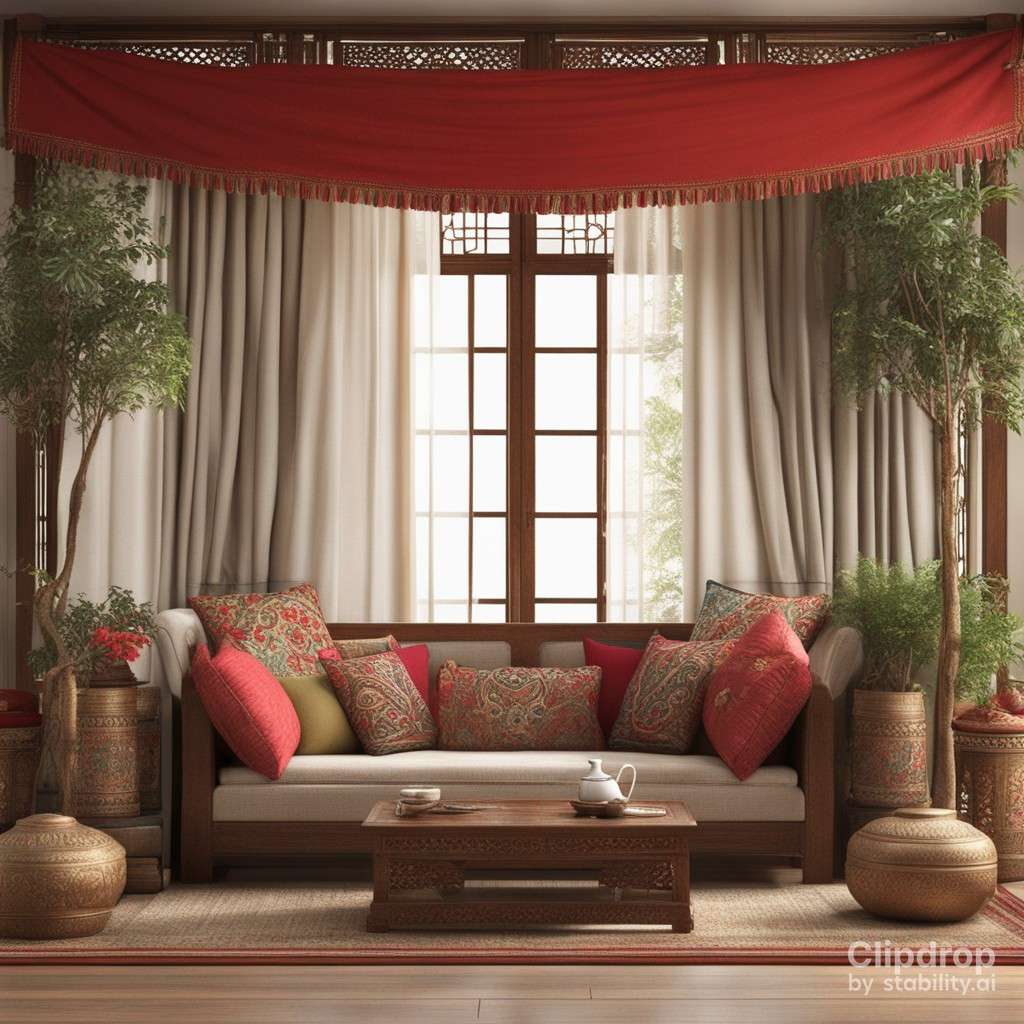
When it comes to home decor, Noren curtains stand out as a timeless choice that brings a touch of Japanese elegance and culture into your living space. In this summary, we’ll explore the key takeaways from our in-depth journey into the world of noren curtains and why appreciating the craftsmanship behind them is essential.
A. Key Takeaways
- Noren curtains are more than just window coverings; they are a symbolic representation of Japan’s rich history and traditions. The intricate designs and meaningful motifs on these curtains tell stories that have been passed down through generations.
- Whether you opt for traditional Japanese curtains with classic Edo period patterns or prefer modern, customizable noren door curtains, you’ll find a wide range of options to suit your style and preferences.
- Linen noren and other quality noren fabrics ensure durability and a luxurious feel, making them a practical and aesthetically pleasing choice for both homes and businesses.
- DIY enthusiasts can unleash their creativity by crafting their own diy noren, allowing for a personalized touch that adds uniqueness to any space.
- The popularity of noren curtains extends far beyond Japan. They are now readily available on platforms like Noren Amazon, making it easier for enthusiasts worldwide to embrace this cultural treasure.
B. Appreciating the Craftsmanship
The allure of noren curtains lies not only in their visual appeal but also in the meticulous craftsmanship that goes into creating each piece. Japanese artisans, with their dedication to preserving traditions, ensure that every noren curtain is a work of art.
The process of making a noren curtain involves various techniques, such as the exquisite dyeing methods like shibori and yuzen, which give life to intricate designs. The choice of materials, including linen noren, ensures that these curtains last for generations, becoming heirlooms that tell stories of their own.
In conclusion, noren curtains are more than just decorative pieces; they are a bridge to Japan’s cultural heritage. Their enduring charm, rich history, and the craftsmanship poured into their creation make them a cherished addition to any space. As you explore the world of noren curtains, take a moment to appreciate the artistry and cultural significance that these curtains bring into your life.
Frequently Asked Questions (FAQs)
A. Are Noren curtains suitable for all types of doors?
- Yes, Noren curtains come in various sizes and styles, making them adaptable to most door types.
B. How can I tell if a Noren curtain is authentic?
- Look for traditional motifs, quality materials like linen, and purchase from reputable sellers to ensure authenticity.
C. What are some common Noren designs for restaurants?
- Common restaurant Noren designs often feature Japanese characters, culinary themes, or traditional patterns to enhance the ambiance.
D. Can I use Noren curtains as wall art?
- Absolutely, Noren curtains can be displayed as unique and artistic wall decor to add cultural flair to your space.
E. Are Noren curtains machine washable?
- It’s best to hand wash or use a delicate cycle to maintain the quality of Noren curtains, as machine washing may damage delicate designs and fabrics.

